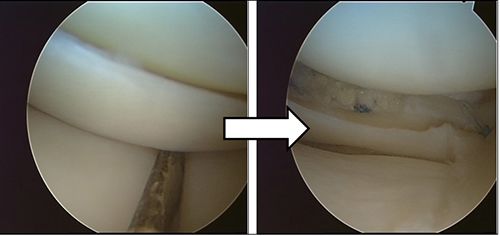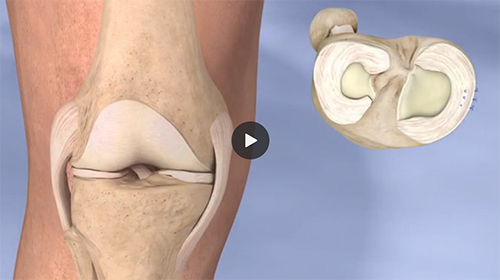
The meniscus is the shock absorber of the knee. If you tear the meniscus and have a large amount of your meniscus removed at a young age there is a very high likelihood you will develop early arthritis of your knee. For this reason we try and repair the meniscus whenever possible. The meniscus has a poor blood supply thus some tears will not heal so a repair is not always possible.
We are now able to repair your meniscus arthroscopically with special devices that stitches your meniscus back together through the small portal (incision) in the front of your knee.
Because the meniscus is a poor healer we may need to protect your meniscal repair while it heals. If your tear is large you may need to be in brace with your knee locked straight for two weeks. From week 2 – 6 we unlock the brace to 90° (a right angle). If you bend your knee past 90° in the first 6 weeks it will put large loads through your healing meniscus thus we limit your motion. To protect your meniscus further we also give you crutches for up to 6 weeks so you limit the load through your repair. It takes 4- 6 months for the repair to be sturdy enough for you to return to any cutting , pivoting or side stepping sports such as dancing, rugby, touch, netball, tennis, skiing etc. Over this period you also want to avoid squatting and twisting on your bent knee.
There is an 80% chance your meniscus will heal. If you have your ACL reconstructed at the same time the success rate increases to 90%. It is important to obey post operative instructions to maximize the chance of your meniscus healing thus reducing the chance of you developing early arthritis
The most common complication is failure of the repair to heal or a second meniscal tear after it has healed. Very rarely there is vascular and or nerve damage from the meniscal repair
-
 Source: Understand.com
Source: Understand.com
